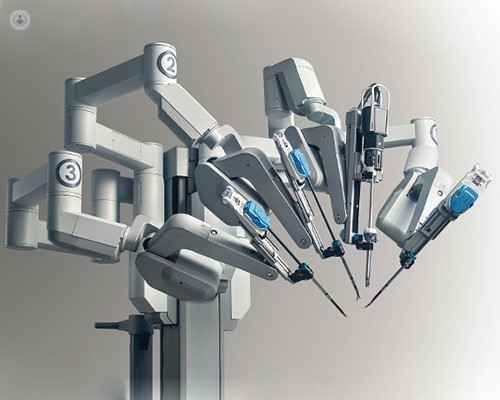Can robotic-assisted hip and knee replacements be the answer?
Written by:Joint replacement surgery has evolved over the years. The focus of the procedure has shifted from pain relief to improving patients’ quality of life, return to activities and increasing the longevity of implants. The solution is a procedure that is well executed, cost-effective and offers long-term solutions.

What is robotic-assisted hip and knee surgery?
Robotic-assisted hip and knee surgery is changing the way surgery is done. Hip and knee surgery can be performed using minimally invasive techniques that lead to faster recovery times and reduced chances of infection.
The surgery is not performed by a robot, but by a surgeon using technology that allows better placement of replacement joints, partial replacements, and increased precision when performing all kinds of joint surgery.
Read more: robotic hip surgery
What exactly happens with robotic surgery?
The technology of robotic-assisted hip and knee replacement surgery is now available to orthopaedic surgeons and may be a solution to some of the drawbacks of current arthroplasty techniques.
Robotic surgery allows the surgeon to translate pre-operative planning to intraoperative bone resection, which improves surgical accuracy and precision.
There are active, semi-active (haptic) and passive robotic systems in existence. Active systems are autonomous and operate under supervision of the surgeon but without any active input. Semi-active systems allow the surgeon to perform the burring or cutting procedure but will retract the cutting tool or provide alerts and feedback when the edges of a resection margin are reached. Passive systems are under continuous and direct control of the surgeon.
What are the benefits of performing robotic-assisted surgery?
The primary aim of introducing robotics in joint arthroplasty is precise reproduction of the surgeon’s preoperative plan during surgery. It has been shown that robotic systems are able to improve the alignment and positioning of implants in both hip and knee arthroplasty. It is extremely likely that more accurate implant placement will translate to better clinical outcomes.
Robotic surgery also attempts to minimise the rate of complications during surgery. Modifications in tissue handling during surgery may translate to better pain relief, early discharge home and reduced complications such as pulmonary embolism.
Robotics has begun to establish itself in the field of hip and knee arthroplasty and offer some tangible advantages.


